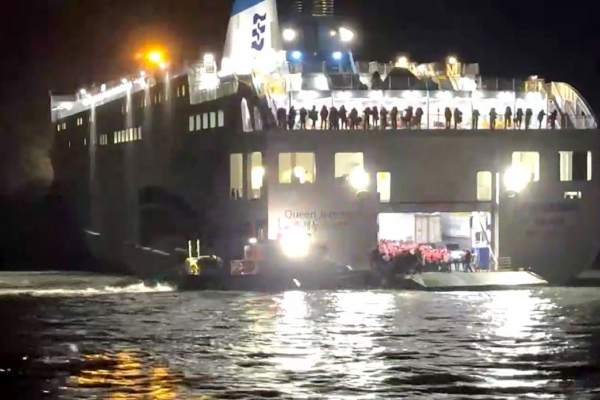On Wednesday, November 19, a South Korean passenger ferry carrying 267 passengers and crew members ran aground in waters near the southwestern tip of the Korean Peninsula. According to the South Korean Coast Guard, all people on board were rescued.
In 2014, South Korea experienced a major ferry accident that resulted in 300 fatalities.
Based on reports from BBC and Reuters, the Coast Guard stated that the 26,000-ton ferry named “Queen Jenuvia 2” was en route from Jeju Island to Mokpo. The ferry operator, Seaworld Ferry based in Mokpo, claimed the vessel could accommodate 1,010 passengers and had multiple lower decks for parking large vehicles and cars.
The ship ran aground near Changsan Island in the waters near Jangsan-myeon, South Jeolla Province. There were 246 passengers and 21 crew members on board.
In a statement, the South Korean Coast Guard announced that passengers had been evacuated from the distressed vessel, with 27 individuals sustaining minor injuries. Most of the injured would be taken to the coastal city of Mokpo, while the 21 crew members would remain on the ship.
Kim Yong-jin, the Chief of the Coast Guard, stated that the accident may have been caused by the captain or navigation officer’s error, and a thorough investigation would be conducted.
Coast Guard officials added that the ferry was currently stranded on rocks and unable to move, with no immediate risk of sinking or capsizing.
Following the incident, South Korean President Lee Jae-myung, who is currently on a Middle East visit, ordered the swift rescue of all individuals on board and requested that details of the rescue operation be promptly disclosed as it progressed.
Rescue footage showed passengers in life jackets waiting to be transferred to rescue vessels approaching the ferry. The bow of the ferry appeared to be stuck at the edge of a small island, with the vessel maintaining an upright position, and the passengers seemed calm.
Passenger Kim Namhyun recounted being awakened by a loud noise at night, causing panic and chaos. Kim Namhyun, a 51-year-old diving instructor from Jeju Island, told Reuters, “I thought I was going to die at that moment. The noise was too loud.”
“But having witnessed the sinking of the ‘Sewol’ ferry incident, I knew that in such situations, one must remain calm, go outside, put on a life jacket, and wait for rescue,” Kim Namhyun referred to the sinking of the “Sewol” ferry in 2014.
According to the Korean Daily, a marine police officer stated, “We have confirmed that there is currently no flooding. We are transferring passengers to patrol boats and relocating them to a safe location.”
The marine police plan to tow the ship ashore during high tide.
The tragic memory of the 2014 “Sewol” ferry sinking remains vivid to this day. The disaster claimed over 300 lives, mostly students on a school trip to Jeju Island.
The “Sewol” ferry was departing from Incheon Port on the west coast and sank near Jindo Island, not far from the location of Wednesday’s sinking.
It was later discovered that the ferry was overloaded and illegally modified to carry more cargo than its design capacity. The ferry made a sharp turn at excessive speed, leading to the tilt.
Subsequently, the ferry capsized, leaving passengers waiting for rescue, which was delayed. Eventually, in a sinking process witnessed by the entire nation through live television broadcast, the ferry sank to the seabed.

